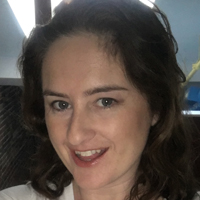 I will confess to a bias right from the start: my first computer was a Commodore 64, I predate the World Wide Web and I remember when ‘Google’ was a typo instead of a verb. The Internet Revolution happened in my teens, and like many of my generation, I consider e-everything useful, but non-essential. I am neither a technophobe nor a technophile, but techno-skeptic, especially in the workplace.
I will confess to a bias right from the start: my first computer was a Commodore 64, I predate the World Wide Web and I remember when ‘Google’ was a typo instead of a verb. The Internet Revolution happened in my teens, and like many of my generation, I consider e-everything useful, but non-essential. I am neither a technophobe nor a technophile, but techno-skeptic, especially in the workplace.
When I graduated from university as a mineral engineer, my first job was at a mine where AutoCAD was the layout software of choice. Thousands of man-hours had been expended digitizing linens, coding Microsoft Access databases and building spreadsheets to modernize the recordkeeping.
As an engineering intern who had been educated at a time when computer use was prevalent, it did not occur to me that this was a new phenomenon. I simply delighted in the fact that I had two work surfaces – a computer desk and a drafting table – and spread out accordingly. I used the fine-tipped felt pens to doodle and take notes. A set square was put to use propping open a window. It was three months before anyone told me that the coaster I routinely used for my coffee cup was actually a paperweight intended to anchor drawings on A0-sized paper.
Computers had arrived and the industry had embraced them. Air quality sampling results were entered into the ventilation database and correlated against time, workplace and activity. Seismic data was uploaded to a database and plotted in real-time. Cable bolt layouts and drill designs were all drafted using software and could be changed with the click of a mouse. Everything was much more efficient. Only the geologists and surveyors routinely used the vault which housed the archival documents.
At that time, there was talk of “paperless” offices in some far-flung fantastical future, an almost incomprehensible concept given our love of prints. Blank walls were a rarity; large-scale drawings and humourless motivational cartoons vied for display space. Hallways would be partially blocked by small groups brainstorming by the long section. Bulletin boards housed up-to-date progress data. Door plaques were unnecessary; it was possible to navigate the workspaces by scanning the contents of the walls.
Fast forward 15 years and the software has become more sophisticated and more entrenched. There may be a drafting table or two around, and someone in surveying probably knows where the vault is if you ask. While the offices are not yet paperless, the proliferation of A0 drawings largely gone. We no longer track progress on the walls.
While I laud the accessibility of the recordkeeping, and the efficiency of the electronic design and scheduling packages, I miss the paper. I miss the conversations we used to have around the long sections, two to 12 of us all looking at the big picture from different perspectives. All of the bits and pieces being discussed in the context of the whole. Now that absolutely everything is on the computer, it seems that we only ever look at it in discrete packages (production drill layout, a raise design, a section of drift development), by invitation, and with a narrower range of experience. Only two or three heads fit around a 21-inch monitor.
I miss the ever-changing prints that provided a focal point – an eye-level exclamation that highlighted what was important at the time. Both literally and figuratively, we knew where we were, knew where we were going and we talked about how we were going to get there. We have lost some of that.
The computer, in addition to being the repository for our data, has become the gatekeeper. With IT protocols, login requirements and the infallible fallibility of plotters, the big picture has become splintered. Like a jigsaw puzzle, experience or long familiarity is necessary to pull the 1,000 pieces into a coherent whole. Expecting an entire workforce to be able to contribute effectively to a plan they cannot picture is unrealistic. We are visual creatures and we need to see to believe.
If the first step to getting tonnes to the mill is getting planned tonnes on paper, then surely the second step is getting that paper back on the wall, where everyone can see it.
Heather White is a professional underground mining engineer with experience in Australian and Canadian base metal and gold mines at companies including Barrick Gold, Cameco and INCO.
Got an opinion on one of our columns? Send your comments to editor@cim.org.




 I will confess to a bias right from the start: my first computer was a Commodore 64, I predate the World Wide Web and I remember when ‘Google’ was a typo instead of a verb. The Internet Revolution happened in my teens, and like many of my generation, I consider e-everything useful, but non-essential. I am neither a technophobe nor a technophile, but techno-skeptic, especially in the workplace.
I will confess to a bias right from the start: my first computer was a Commodore 64, I predate the World Wide Web and I remember when ‘Google’ was a typo instead of a verb. The Internet Revolution happened in my teens, and like many of my generation, I consider e-everything useful, but non-essential. I am neither a technophobe nor a technophile, but techno-skeptic, especially in the workplace.